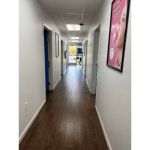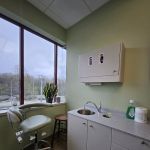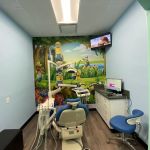
Effective Sleep Apnea Treatments That Don’t Involve CPAP
- 1. Understanding Sleep Apnea and Its Effects
- 2. Why Some People Avoid CPAP
- 3. Alternative Treatments for Sleep Apnea
- 4. Lifestyle Changes to Manage Sleep Apnea
- 5. Surgical Options for Sleep Apnea
- 6. Real-Life Success Stories Without CPAP
1. Understanding Sleep Apnea and Its Effects
Sleep apnea is a common sleep disorder that causes breathing interruptions during sleep. It can lead to fragmented sleep and result in daytime fatigue, high blood pressure, and other health issues. The most common form, obstructive sleep apnea (OSA), occurs when the muscles in the throat relax excessively, blocking the airway. Central sleep apnea, on the other hand, involves the brain failing to signal the muscles responsible for breathing.
While CPAP (Continuous Positive Airway Pressure) is often prescribed for sleep apnea treatment, it’s not the only solution. Many individuals seek alternative treatments due to discomfort or other reasons. Understanding these treatments can help individuals manage their condition effectively and improve their quality of life.
2. Why Some People Avoid CPAP
CPAP is one of the most effective treatments for sleep apnea, but it's not suitable for everyone. Some common reasons people avoid CPAP therapy include:
- Discomfort: Many users find the mask uncomfortable or experience skin irritation.
- Noise: The sound of the machine can disturb sleep, particularly for sensitive sleepers or their partners.
- Claustrophobia: The feeling of wearing a mask can trigger anxiety or discomfort for some people.
- Compliance: It's challenging for many to stick with the therapy consistently, especially over the long term.
Given these challenges, many individuals turn to alternative treatments that might be more suitable for their needs.
3. Alternative Treatments for Sleep Apnea
If CPAP therapy isn’t an option, there are several other treatments available for managing sleep apnea:
- Oral Appliances: Dental devices, also known as mandibular advancement devices (MADs), reposition the lower jaw and tongue to keep the airway open. These are typically recommended for mild to moderate obstructive sleep apnea.
- Positional Therapy: Some individuals experience sleep apnea symptoms only when sleeping on their back. A positional therapy device can help keep them sleeping on their side, reducing the frequency of apnea episodes.
- Positive Airway Pressure (PAP) Devices: While similar to CPAP, there are alternative PAP devices like BiPAP and APAP that adjust pressure based on the user’s needs, making them more comfortable for some individuals.
- Expiratory Positive Airway Pressure (EPAP): EPAP devices are small, disposable valves that are placed over the nostrils and work by creating pressure when exhaling to help keep the airway open during sleep.
These alternatives may offer relief without the discomfort associated with CPAP machines, especially for those with milder forms of sleep apnea.
4. Lifestyle Changes to Manage Sleep Apnea
In addition to medical treatments, lifestyle changes can play a crucial role in managing sleep apnea and reducing symptoms:
- Weight Loss: Excess weight, especially around the neck, can contribute to airway obstruction. Even a modest weight loss can reduce the severity of sleep apnea.
- Avoiding Alcohol and Sedatives: Alcohol and sedatives relax the muscles in the throat, which can exacerbate sleep apnea. Limiting their use, especially before bedtime, can help.
- Exercise: Regular exercise, particularly aerobic activity, can help reduce symptoms by improving overall respiratory function.
- Sleep Position: Sleeping on your side rather than your back can significantly reduce sleep apnea episodes. Some people use special pillows or devices to promote side sleeping.
Making these changes may not completely eliminate sleep apnea, but they can significantly improve sleep quality and reduce the severity of symptoms.
5. Surgical Options for Sleep Apnea
For individuals with severe sleep apnea who do not respond well to other treatments, surgery may be considered. Some common surgical options include:
- Uvulopalatopharyngoplasty (UPPP): This procedure involves removing excess tissue from the throat to widen the airway and reduce obstruction.
- Genioglossus Advancement (GA): This surgery moves the muscle that controls the tongue to reduce airway collapse during sleep.
- Inspire Therapy: This surgically implanted device stimulates the muscles of the airway during sleep to prevent collapse, providing a CPAP alternative.
Surgery is typically considered a last resort and is usually only recommended for those with severe sleep apnea or when other treatments have failed.
6. Real-Life Success Stories Without CPAP
Many people have successfully managed their sleep apnea without the need for CPAP. For example, one individual found significant relief after losing weight and using a mandibular advancement device. Others have improved their symptoms by making simple lifestyle changes, like sleeping on their side and reducing alcohol intake before bed.
These real-life success stories demonstrate that with the right treatment and lifestyle adjustments, sleep apnea can be managed effectively without relying on CPAP therapy.







 Western Dental & Orthdontics Kids4.0 (394 review)
Western Dental & Orthdontics Kids4.0 (394 review) Judah Garfinkle, D.M.D., M.S.3.0 (3 review)
Judah Garfinkle, D.M.D., M.S.3.0 (3 review) The Bronx Dental Center4.0 (557 review)
The Bronx Dental Center4.0 (557 review) David M. Wolf DDS, PC5.0 (298 review)
David M. Wolf DDS, PC5.0 (298 review) Dental Associates of Moreno Valley3.0 (39 review)
Dental Associates of Moreno Valley3.0 (39 review) ABC Kids Dental Group - San Fernando4.0 (304 review)
ABC Kids Dental Group - San Fernando4.0 (304 review) The Importance of Oral Health Education During Pregnancy for a Healthy Pregnancy
The Importance of Oral Health Education During Pregnancy for a Healthy Pregnancy Best Tips for Brushing Your Teeth Properly for Healthy Gums: Essential Techniques for Oral Health
Best Tips for Brushing Your Teeth Properly for Healthy Gums: Essential Techniques for Oral Health Why Skipping Dental Checkups Can Lead to Bigger Oral Health Problems
Why Skipping Dental Checkups Can Lead to Bigger Oral Health Problems Advantages of Porcelain Dental Restorations
Advantages of Porcelain Dental Restorations How Can Diabetes Cause Tooth and Gum Problems? Preventing and Managing Oral Health Issues
How Can Diabetes Cause Tooth and Gum Problems? Preventing and Managing Oral Health Issues Healthy Habits for Promoting Good Oral Health and Hygiene: Tips for a Healthy Smile
Healthy Habits for Promoting Good Oral Health and Hygiene: Tips for a Healthy Smile